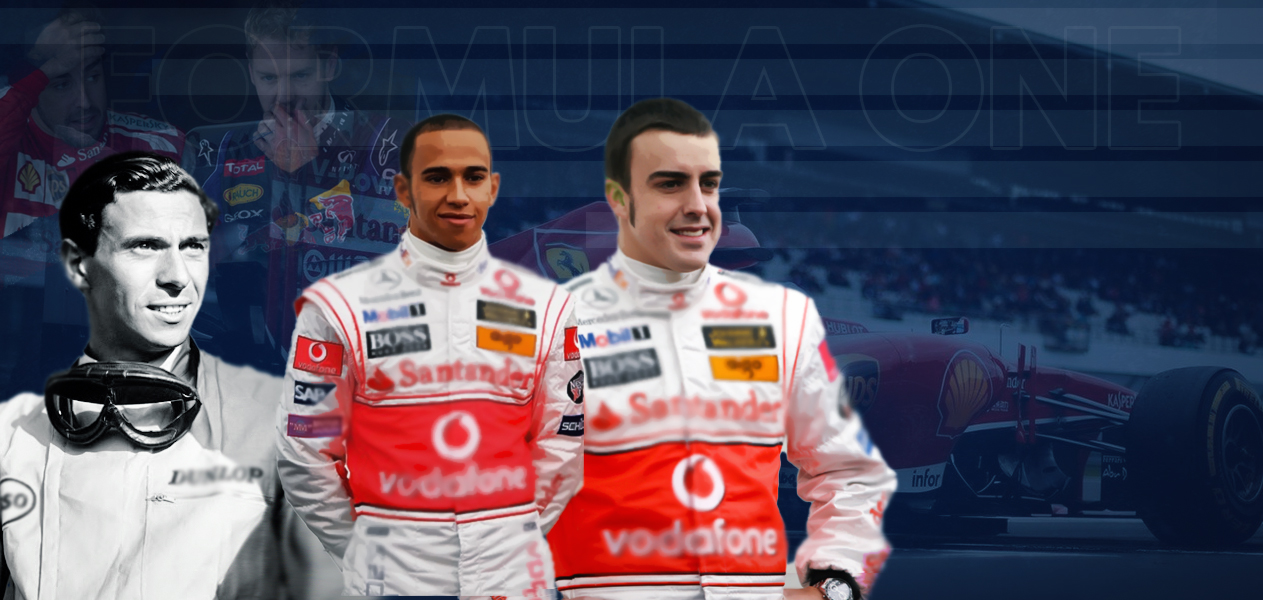F1: BIGGEST CHAMPIONSHIP BATTLES
Sebastian Vettel vs Fernando Alonso – 2012- The Elusive Third Crown
The 2012 F1 season was probably one of the most entertaining and most competitive seasons in recent history. With the driver’s championship only having been confirmed in the very final race of the season, the season saw multiple race-winners and enough drama to go down in history as one of the greatest F1 seasons. 2012 was the peak of Red Bull’s dominance, with Sebastian Vettel going for the third consecutive Driver’s Championship and Red Bull for their third Constructor’s Championship. The season had 12 teams with multiple of them fighting for podiums and wins. An interesting fact about the 2012 F1 season is that the season saw 7 different race winners in the opening 7 races of the season. The championship lead changed eight times that season, going between Jenson Button, Fernando Alonso, Lewis Hamilton and Sebastian Vettel, although at the end it came down to a fierce and closely contested battle between Ferrari’s Fernando Alonso and Red Bull’s Sebastian Vettel.
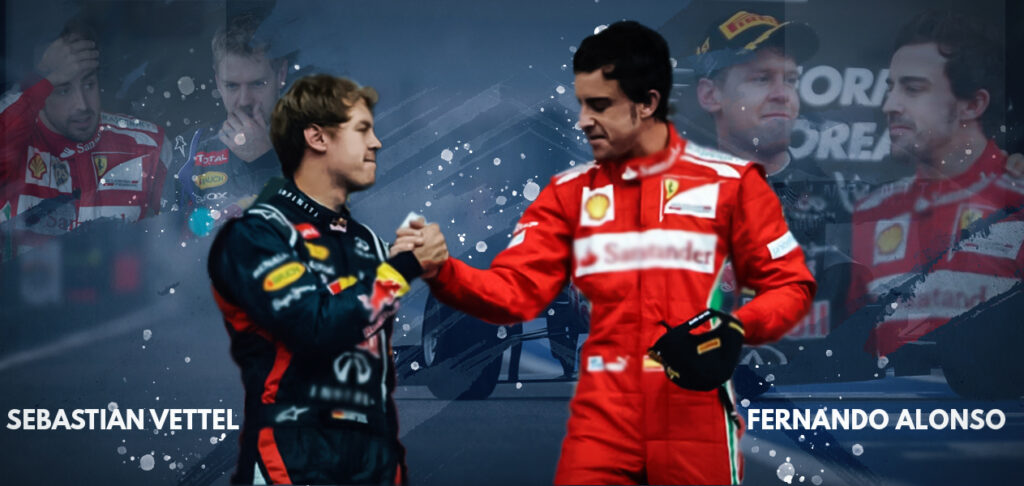
The 2012 season was also the perfect example of Fernando Alonso’s greatness. Ferrari’s car that season was not one that should have been fighting for wins or podiums, but Alonso showed the world that no matter what car you put him in, he would maximise everything from the car and push it to the limit. Alonso showed tremendous consistency throughout the season as he put that Ferrari in point finishes in all of the races barring his retirements in Spa and Suzuka. He finished on the podium 13 times that season compared to Vettel’s 10 podium appearances. The Ferrari that season was probably the third best car of the grid, maybe even fourth when Räikkönen drove the wheels of the Lotus with Alonso ending up 3 points behind Vettel that showed the pure class of the Spaniard. The McLaren was a competitive force that season as well, with the car easily being the fastest over one lap, but reliability issues let down Jenson Button and Lewis Hamilton far too often.
Going into the final race of the season, Vettel headed Alonso with a 13-point lead. Although Vettel was a favourite going into the Brazilian Grand Prix, first lap contact left Vettel right at the bottom. While Alonso tried his best to make up for Vettel’s misfortunes, Sebastian showcased his mastery of driving in the wet to make his way through the field to P6, which was just enough to help him clinch his 3rd World Title.
Räikkönen v Alonso v Hamilton – 2007- The Iceman Cometh
The 2007 season was one like none else. Going into the season, double world champion Fernando Alonso shifted allegiances from Renault to McLaren in pursuit of his third consecutive driver’s title. McLaren had paired a young rookie by the name of Lewis Hamilton alongside the double world champion Kimi Räikkönen who had had terrible reliability issues with McLaren that cost him at least one driver’s title. He had shifted to Ferrari at the end of the previous season too, replacing the departing seven-time world champion Michael Schumacher. This was the first season since 1995 that Ferrari didn’t have Schumacher driving for them.
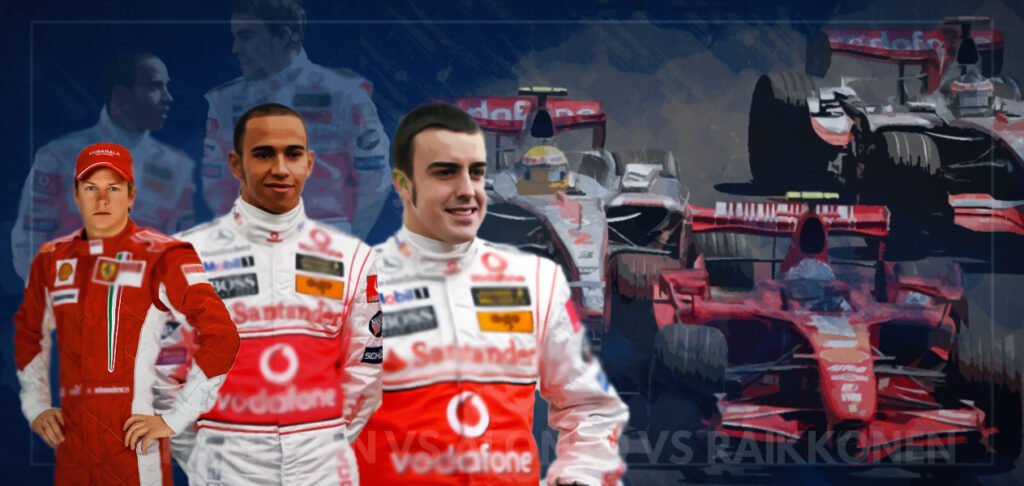
Räikkönen started off the season strongly with a win in his very first race for the Maranello-based team. Ferrari’s main rivals that season, McLaren, had their own inter-team issues going on with rookie Lewis Hamilton showing the team why he shouldn’t be considered a number 2 driver.
McLaren’s inter-team disputes along with the spy-gate controversy had them disqualified from the constructors’ championship. The spy gate controversy was one that shook the Formula One world. The controversy saw former Ferrari Head of Performance Development Nigel Stepney and senior McLaren engineer Mike Coughlan involved in corporate espionage that had Stepney pass on confidential Ferrari documents to Coughlan, which was a clear breach of International Sporting Code. Although McLaren claimed that they never used the information that Coughlan had, the season saw a lengthy investigation into this matter that eventually saw multiple penalties for the Woking-based team. The FIA investigation stated that as a result of the spy-gate controversy, McLaren would have to pay a fine of $100 million and would be disqualified from the Constructor’s Championship for the 2007 season. The team was also not allowed to have any team member on the podium except the drivers. The drivers, however, were free to contest in the Driver’s Championship in exchange for their cooperation during the investigation. The controversy saw McLaren out of the Constructors’ championship, effectively handing the title over to Ferrari.
Even though Alonso and Hamilton fought tooth and nail, going into the final race of the season it was the rookie who led his two-time world champion team mate by 4 points (107-103) with Kimi Räikkönen further back at 100 points. Räikkönen, who trailed the two McLaren drivers by 20 points, had had a tremendous run with consistent podium finishes along with wins that kept him in the title hunt coming into the final six races. The race at Interlagos was one to be remembered for, with Hamilton being denied a championship in his rookie year thanks to gearbox issues and Fernando Alonso finishing only third. Räikkönen drove an error-free race to not only win the Brazilian Grand Prix but to take an unlikely World Driver’s Championship that had eluded the Iceman for so long.
Raikkonen, till date, remains Ferrari’s last driver’s champion.
Felipe Massa v Lewis Hamilton – 2008- Heartbreak like none other!
After coming agonisingly close to become world champion in his rookie year, Lewis Hamilton started the season trying to avenge the previous season’s misfortunes. This was not to be an easy task as McLaren’s old nemesis Ferrari mounted a challenge, with Felipe Massa taking the fight to the young Brit.
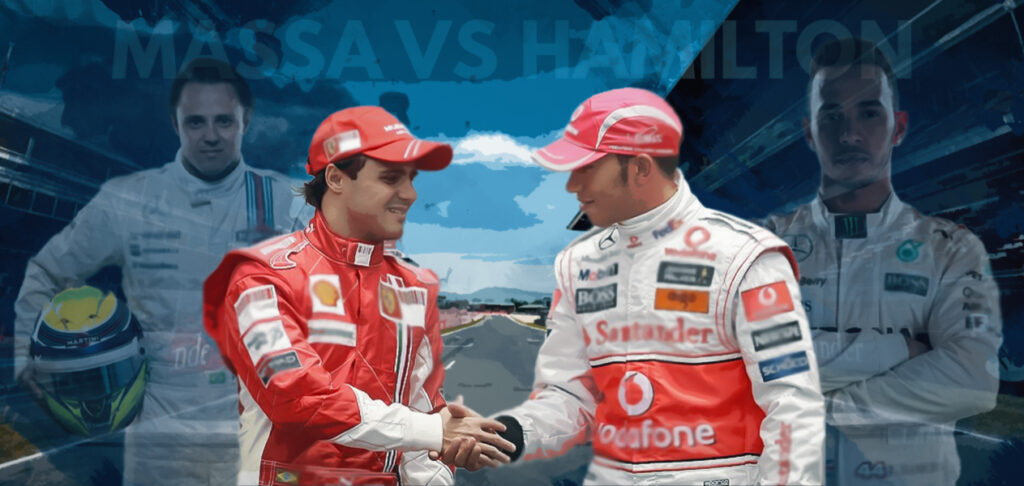
Throughout the season, the Brazilian and the Brit exchanged punches each round, with both taking wins almost every alternate rounds. But it was Hamilton who had a slight lead over Massa heading into the final races of the season, with the Ferrari having succumbed to reliability issues in the opening rounds that affected Massa’s championship battle. Heading into the season finale at Interlagos, Hamilton would see his dreams of a first World Championship fade away. Lewis led Massa by 7 points, but it was Ferrari who took the upper hand going into the race with Massa qualifying on pole and Hamilton starting only P4.
Massa had maintained a comfortable lead right at the front followed by Fernando Alonso. With him leading, the Brazilian needed Hamilton to finish lower than fifth for him to win the title. With heavy rain beginning to fall towards the end of the grand prix, almost all of the front-runners pitted except Toyota’s Timo Glock. Massa took the victory and after getting passed by a young Sebastian Vettel for fifth Hamilton lay P6, and it seemed like the young Brit had lost it again. Glock, however, struggled with tyre grip and began to go slowly which saw not only Vettel overtake him for fourth place but Lewis Hamilton also made up a place to take that elusive fifth spot which helped him secure his first world driver’s championship by only a single point.
Tears of joy in the Ferrari garage soon turned to disappointment and heartbreak. The home-hero Massa did everything he could to get that championship but missed out by a solitary point. Felipe’s tears of agony and despair showcased the fight both the drivers put in throughout the season and what it meant to lift that crown.
Michael Schumacher v Damon Hill – 1994- Tragedy, Controversy and a new King
The 1994 season is remembered for all the wrong reasons. The season started with the deaths of Roland Ratzenberger and three-time world champion Ayrton Senna at the San Marino Grand Prix. Overshadowed by controversy, the season was a two-horse race between Benetton’s Michael Schumacher and the Williams of Damon Hill.
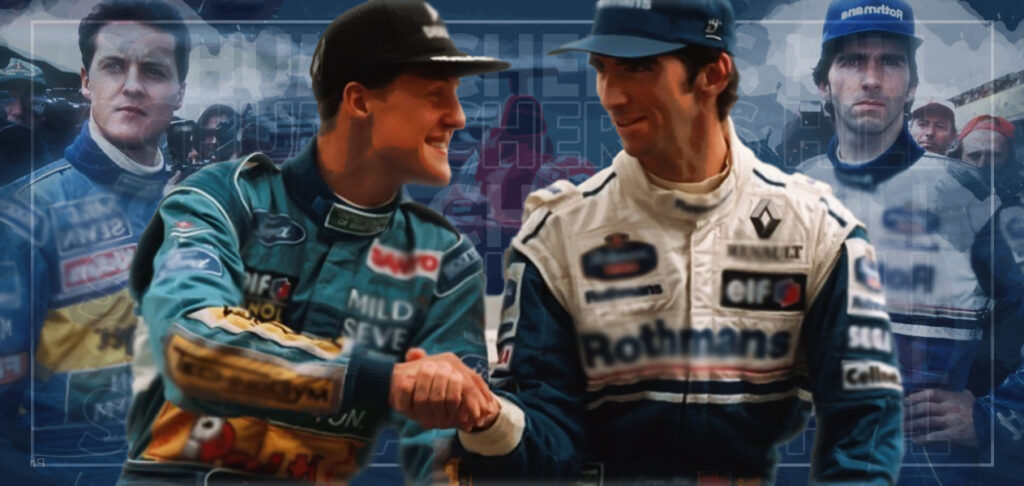
Schumacher started the season strong with four consecutive victories before Hill took his first victory at the Spanish Grand Prix. Hill and Schumacher continued to trade shots at each other after that, although the German maintained a respectable lead over the British driver. Schumacher, however, faced controversy when his win at Spa was ruled out due to technical infringements on his car. Schumacher’s share of controversy didn’t end there as he was handed a two-match ban in Italy and Portugal for his actions in the British Grand Prix where he overtook in the formation lap and failed to serve a stop-go penalty on time.
Schumacher’s penalties – and Hill capitalising on them – tightened the gap at the top of the driver’s championship table going into the final three races, Schumacher won in Europe as Hill finished second and the roles were reversed in the next race at Suzuka.
Going into the final race in Australia, Schumacher led Hill by a singular point and needed to finish ahead of the Brit to become the first German Formula One Driver’s World Champion. He qualified second with Hill managing P3. The race started perfectly for the German, with him overtaking Nigel Mansell for the lead of the race. Schumacher held the lead comfortably from Hill but on Lap 36, all of that changed – Schumacher went off the track, hit the wall with his right side but somehow managed to get back on track. Hill made up for Schumacher’s detour and caught up with the Benetton driver, and as Hill tried to overtake Schumacher, he turned in and the two title rivals collided with irreparable damages. Schumacher retired on the spot and Hill – although having tried to pit and continue – had to retire as well given the damage. This meant neither driver scored any points in the last race, leaving Michael Schumacher as the Driver’s World Champion of 1994.
Williams deemed Schumacher’s move on Hill as desperate and deliberate. The FIA deemed the incident as a racing incident. A season filled with tragedy ended with controversy as well, with many people till date maintaining Schumacher deliberately drove into Hill.
John Surtees v Graham Hill v Jim Clark – 1964- Max points, no Championship!
The 1964 season saw three British legends fight it out for motorsport’s most elusive crown. Throughout the season, Surtees’ Ferrari, Hill’s BRM and Clark’s Lotus were all championship contenders, with the three of them sharing the victories throughout the season.
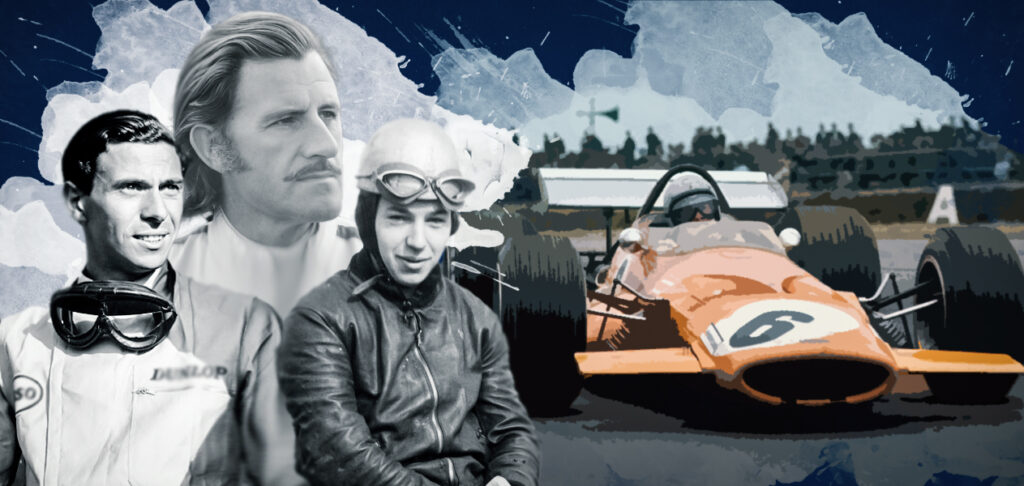
Although it was Clark and Hill who had the better start to the season, a valve gear issue put the former out of the German Grand Prix, handing Surtees a win that opened up the championship even more. The Austrian Grand Prix was anti-climactic as none of the three championship runners finished the race, but victory for Surtees at Monza and a second place at the US Grand Prix set up a championship showdown between Surtees and Clark in Mexico. The permutations were out there – for Hill to win, he needed to win and hope Surtees was third or lower and Clark second or lower. For Surtees, he needed to win and hope Hill finished fourth or lower. Clark had to hope Surtees finished third or lower and hoped Hill finished none higher than fourth, with himself winning. The finale went horribly wrong for the BRM driver as Ferrari’s number two driver Lorenzo Bandini made contact with Hill, leaving him out of a winning position. Surtees made up places to eventually take second place and with Clark having retired after having led the race and almost pulling off a championship winning race before his engine blew, with Hill not finishing high enough, it was enough for Surtees to be crowned as the World Driver’s Championship.
The 1964 championship will also go down in history as probably the only season where the driver with most number of points did not win the championship. The rule during that season was that only the best six results would be counted towards the championship, which meant even though Hill had scored 41 points over the season, his top six amounted to only 39 while Surtees’ amounted to 40.
